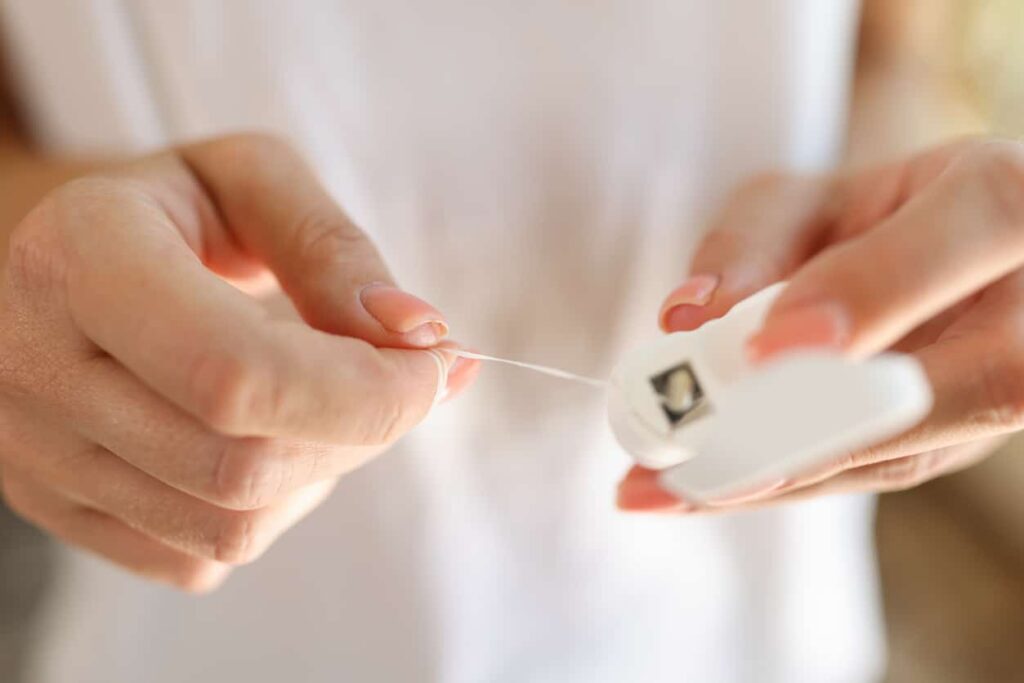Going to the dentist can feel very scary for many children, and sometimes even parents…

How to Floss and Why It’s Important
Do you know how to floss? When was the last time you flossed? Flossing is super important for keeping your teeth and gums healthy, but a lot of people choose to skip it. While brushing gets most of the gunk off your teeth, flossing cleans the spots your toothbrush can’t reach—like between your teeth and under your gums.
What Is Flossing?
Flossing is when you use a thin thread to clean between your teeth and under your gums. This removes stuff like food and plaque, which can cause cavities, bad breath, and gum problems.
Why Flossing Is Awesome:
Prevents Cavities: Gets rid of food that bacteria love to snack on.
Protects Your Gums: Stops plaque from building up and irritating your gums.
Keeps You Healthy: Good oral health promotes a healthy heart and has other health benefits.
How to Floss:
1. Cut Some Floss
Grab about 18 inches of floss (or use a plastic single-use flosser if you prefer). Wrap most of it around one middle finger and a little around the other.
2. Hold It Tight
Use your thumbs and fingers to hold the floss tight.
3. Slide It In
Gently slide the floss between your teeth. Don’t snap it into your gums.
4. Make a ‘C’ Shape
Curve the floss around one tooth and move it up and down.
5. Clean Both Sides
Do the same for the tooth next to it.
6. Use a Fresh Spot
Move to a clean section of floss for each tooth.
7. Don’t Forget the Back Teeth
They’re easy to miss, but they need love too!

How Often Should You Floss?
The American Dental Association says to floss at least once a day. Doing it before bed is best because it clears out everything from your day and lets your toothpaste work better.
Types of Floss and Tools
Not all floss is the same! Pick what works best for you:
Traditional Floss:
- Waxed Floss: Great for tight spaces.
- Unwaxed Floss: Thin and eco-friendly.
Dental Tape:
- Wider and perfect for bigger gaps.
Other Options:
- Floss Picks: Handy for quick use but may not clean as thoroughly.
- Water Flossers: Perfect for braces or sensitive gums. They use water to clean between teeth.
- Interdental Brushes: Little brushes for bigger gaps between teeth.
Flossing Tips for Everyone
Braces or Retainers:
Use a floss threader to get under wires or try special orthodontic floss.
Kids:
Start flossing as soon as their teeth touch and use colorful flossers to make it fun.
Seniors:
Water flossers or interdental brushes can be easier on stiff hands.
How to Floss Without Mistakes
Nobody is perfect, mistakes happen, but don’t let these mistakes mess up your flossing:
- Snapping the Floss: Be gentle to avoid hurting your gums.
- Skipping Back Teeth: They’re just as important!
- Reusing the Same Spot: Switch to a clean section for every tooth.
- Going Too Hard: Flossing too rough can hurt your gums.

Why People Skip Flossing
Let’s bust some excuses:
“It takes too long.” Start with just a few teeth a day.
“It’s uncomfortable.” Try different types of floss until you find one that feels good.
“I forget.” Floss while watching TV or set a reminder on your phone.
FAQs
Q. Is it normal to bleed when first starting to floss?
A. A little bleeding is okay at first. Keep flossing, and it should stop.
Q. Can I floss too much?
A. Don’t go overboard. Once a day is plenty.
Q. Do I still need to floss if I use a water flosser?
A. Yes, water flossers are great, but they work best as an extra step.
Health Benefits of Flossing
Flossing isn’t just good for your mouth. It can help your whole body! Healthy gums can mean a healthier heart. Flossing helps control blood sugar which lowers your risk of diabetes. Keeping your gums healthy can lower risks during pregnancy.
Quick Flossing Tips
- Floss at the same time every day so it becomes a habit.
- Invest in good tools, like high-quality floss or a water flosser.
- See your dentist regularly to make sure you’re doing it right.
Get Flossing
Flossing is a simple step that makes a big difference. It keeps your teeth and gums healthy, stops cavities, and even boosts your overall health. Start today—your smile will thank you!
To achieve optimal oral hygiene, it is important to floss correctly. Flossing reduces the risk of tooth decay and gum disease by removing bacteria, plaque, and food debris from your teeth. The American Dental Association recommends flossing at least once per day and brushing twice per day!



